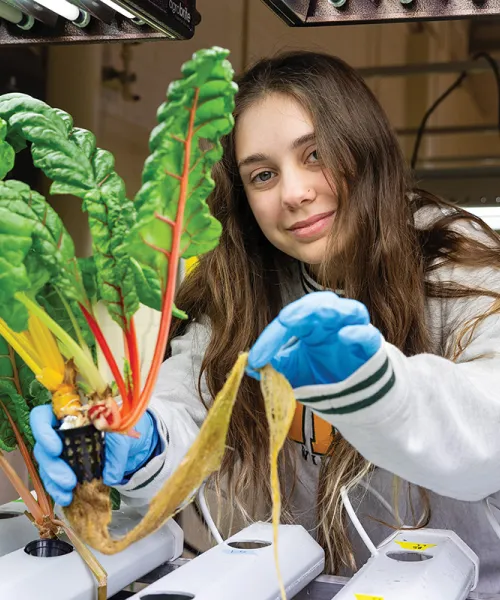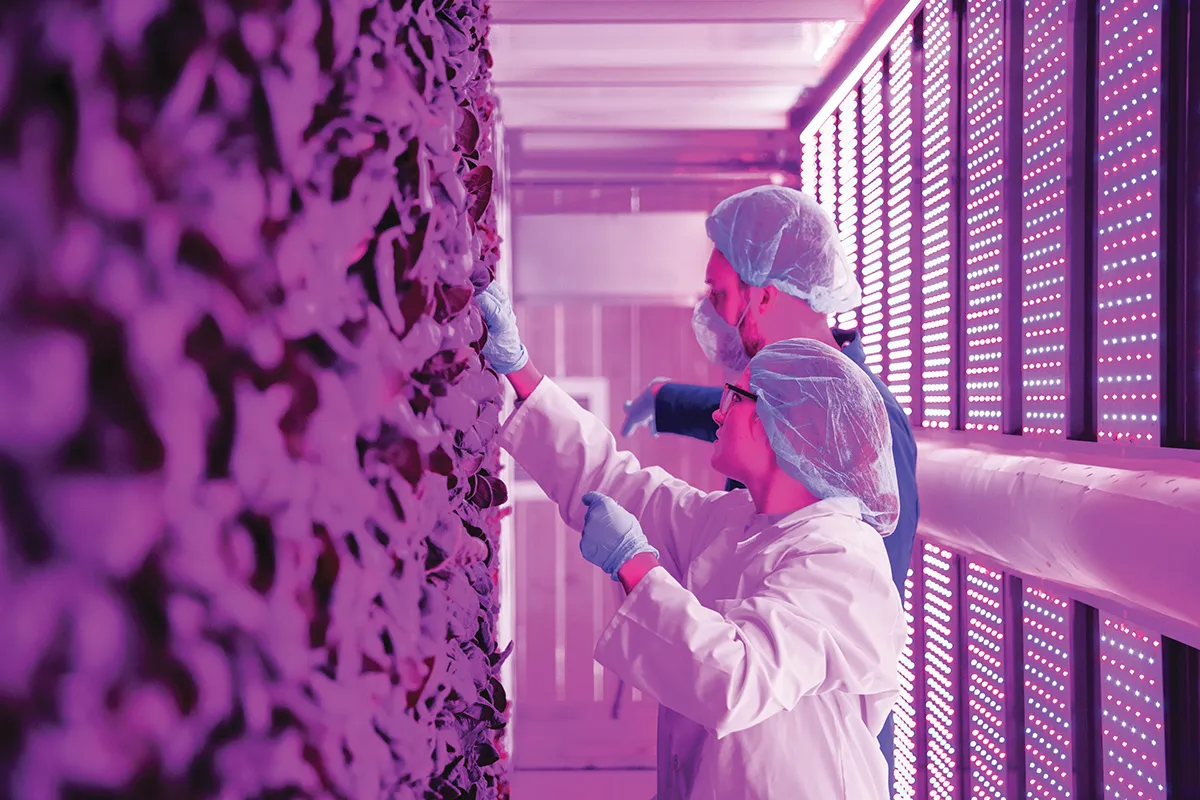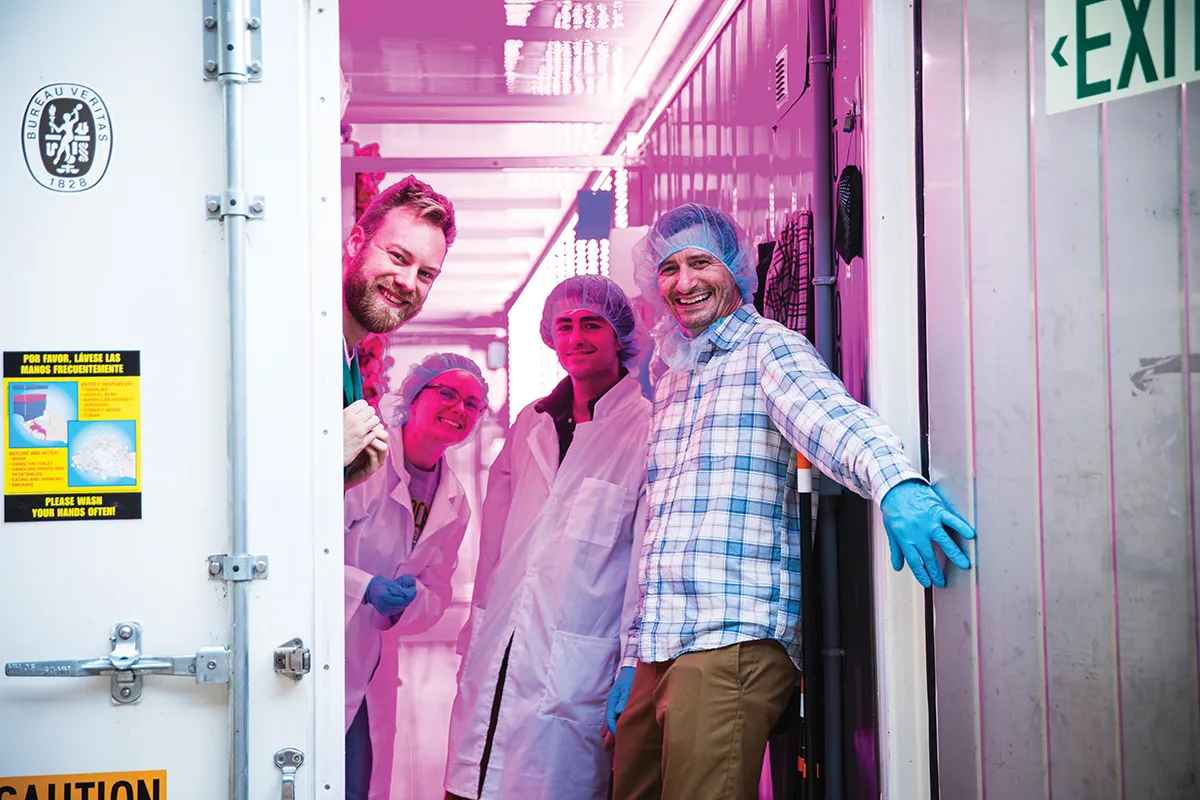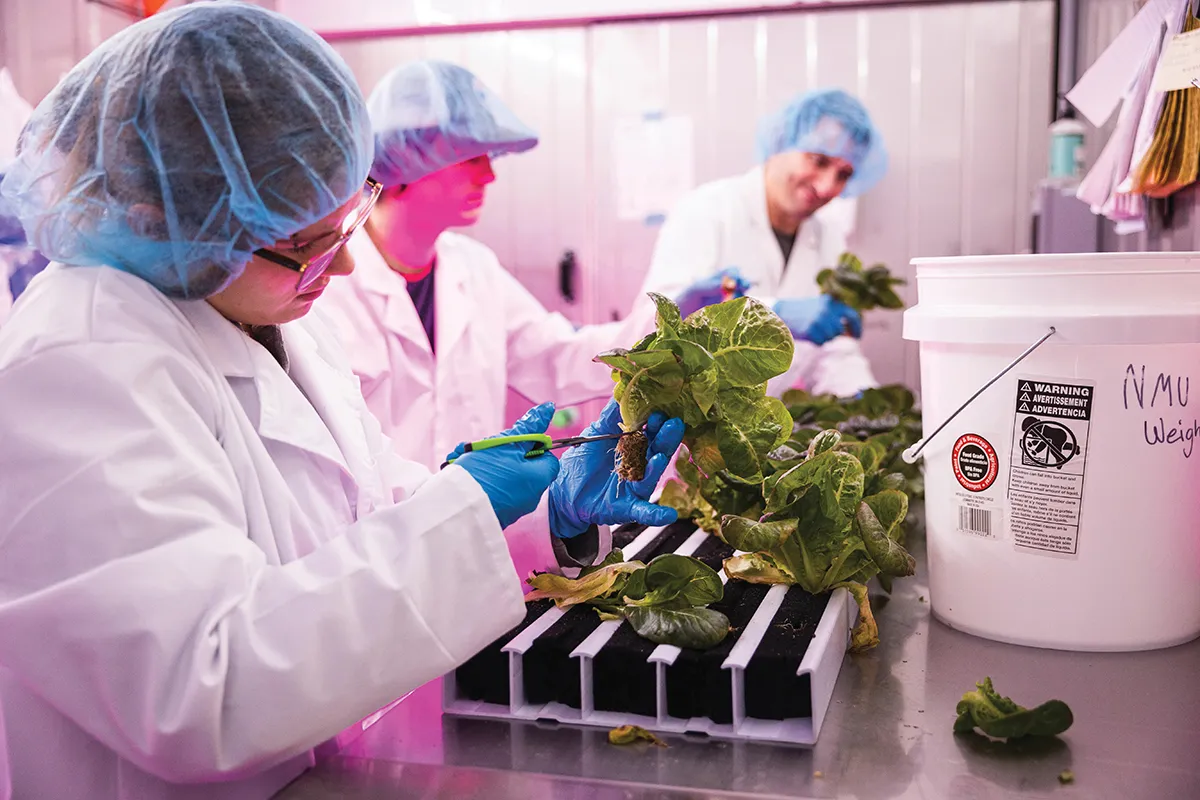— By Maggie Anderson
In the midst of Upper Michigan’s harsh climate, long rows of lettuce and herbs are thriving—indoors. Inside NMU’s Jacobetti Center, students are learning to farm the future using a high-tech “grow container”commercial-scale unit that brings year-round agriculture to the community.
For those unfamiliar with grow containers, they are essentially a farm in a box. About the size of a freight container, it’s equipped with everything a plant needs: vertical and horizontal shelving, irrigation, lighting and climate control, fine-tuned for high-density growing. Best of all, the entire system can be monitored and adjusted remotely, even from a smartphone.
Ultimately, NMU adopted the grow container to put more responsibility into students’ hands. In these systems, crops live or die based on daily care and management, teaching students not just theory but the real accountability and problem-solving skills that define modern agriculture.
“Indoor agriculture is another tool in the toolbox for feeding the world. It’s not the only answer, but it’s one answer—and teaching students how to manage these systems gives them skills they’ll need in a world where resources are limited,” said professor Kari Farkas-Lasich ’10 BS, ’18 MS.
"Teaching students how to manage these systems gives them skills they'll need in a world where resources are limited"
From their very first semester, students in the indoor agriculture and controlled environment agriculture degree programs assemble, disassemble, clean, and troubleshoot multiple hydroponic and aquaponic systems. By the time they move into the bachelor’s program, each student is responsible for managing their own crops through an entire semester, with success or failure depending on daily care. The process is often compared to raising a child. Along the way, students can build skills that extend well beyond agriculture, including HVAC, plumbing, electrical work, and even business management.
By combining innovation with sustain-ability, NMU’s grow lab offers a unique position facing the forefront of one of the world’s most pressing challenges: how to feed the future. By conserving water, recycling resources and producing crops year-round, the labs demonstrate how indoor farming can be part of the solution to global food challenges.
The harvests also serve a purpose beyond the classroom. Fresh produce makes its way to NMU Dining Services, to the campus food pantry through the Hunger-Free Campus initiative, and even to the Upper Peninsula Animal Welfare Shelter, where experimental crops like catnip are put to good use. These partnerships ensure that what students learn benefits both their education and the wider community.



